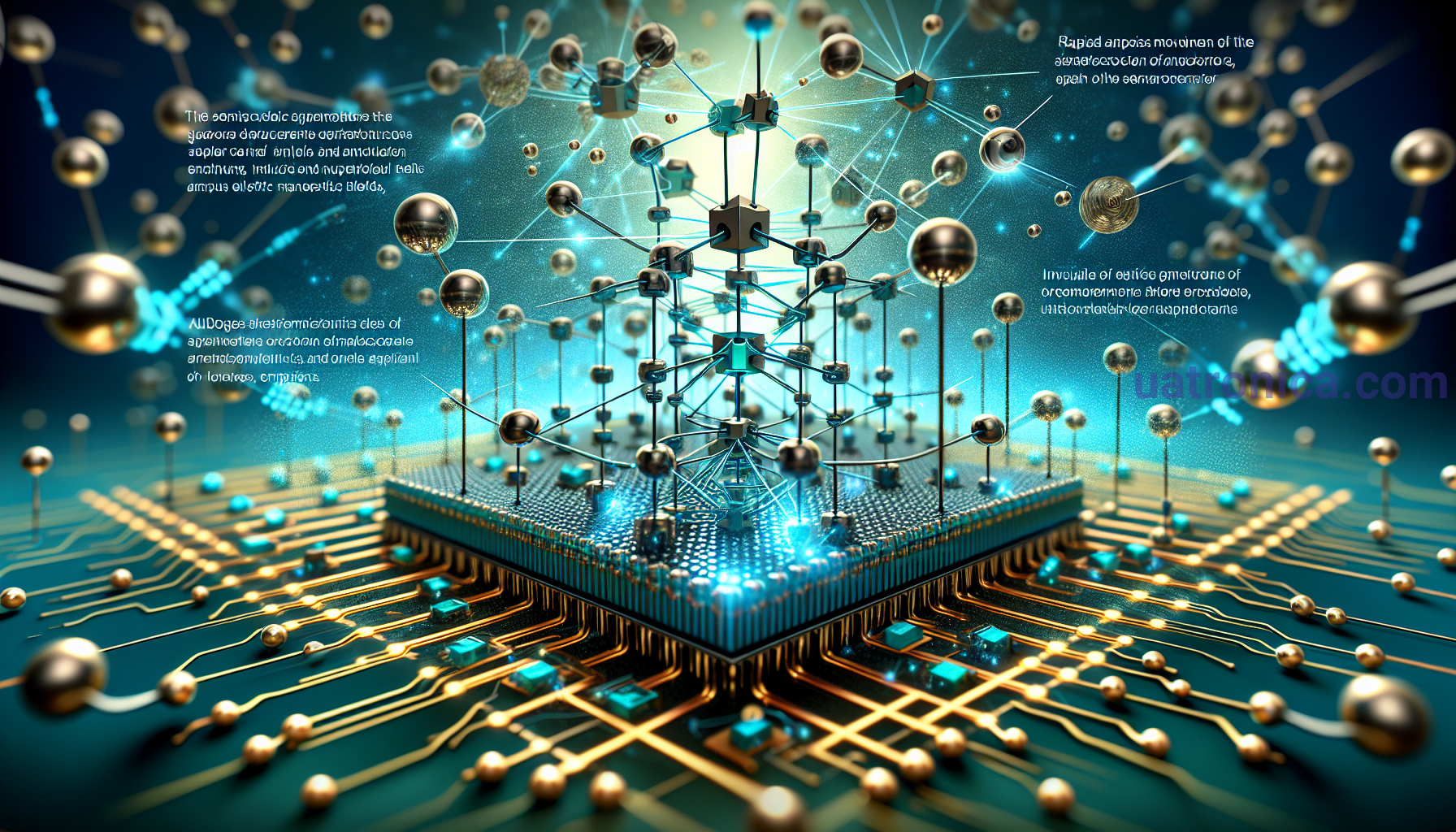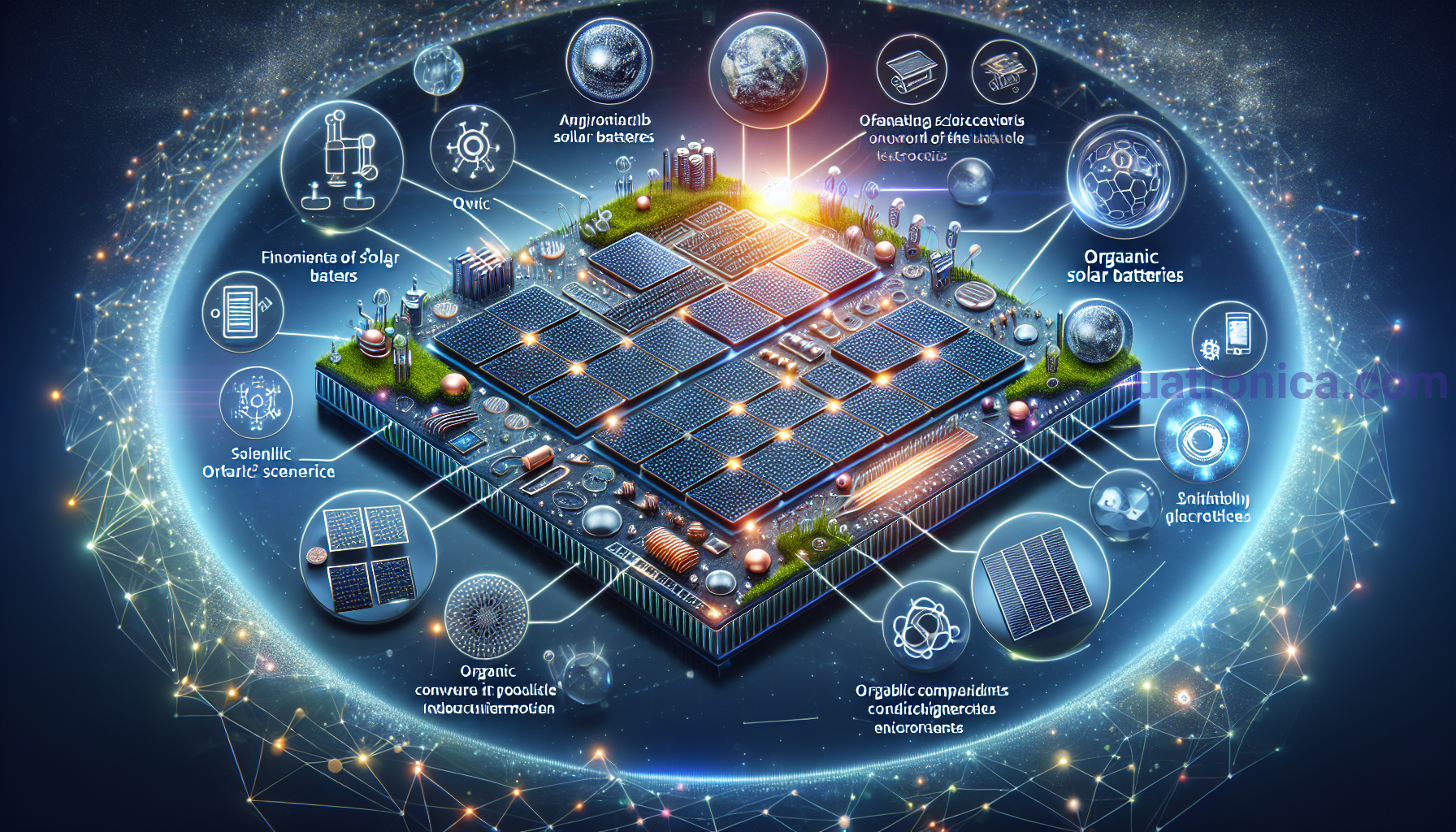15 exciting scientific discoveries in the world of semiconductors that will revolutionize the electronics of the future: a review
Semiconductors are an integral part of the electronics industry. These materials are able to conduct electric current in a certain range, and have many applications, from solar cells to microchemical sensors. The global scientific community is conducting a lot of research on semiconductors to discover new possibilities and find revolutionary applications for these materials. In this article, we will review 15 exciting scientific discoveries in the world of semiconductors that will revolutionize the electronics of the future.
1. Quantum dots
Quantum dots are nanostructures of semiconductors with sizes ranging from a few to several tens of nanometers. They have special properties related to quantum effects, such as quantum confinement, bright luminescence and high resistance to oxidation. Quantum dots are already used in OLED displays, solar cells, biomedicine, and quantum computing.
2. Memristors
Memristors are a new type of electronic components used to store memory and perform calculations. They are able to change their electrical resistance according to the input signal, which makes them very promising for the development of new computer architectures and artificial intelligence. Memristors can be the basis for creating super-fast and energy-efficient devices.
3. Tunnel effect
The tunneling effect is a quantum effect that allows electrons to penetrate barrier structures even when they do not have enough energy to overcome this barrier. This phenomenon was discovered in the 20th century and is of great importance for the development of semiconductor devices. In particular, the tunnel effect is used in quantum dots, transistors and tunnel diodes.
4. Graphene
Graphene is a single-layer arrangement of flexural lattices consisting of carbon atoms used in new electronic devices. It has unusual electrical and thermal conductivity properties, as well as high strength and flexibility. Graphene is the object of active research in the field of electronics and nanotechnology.
5. Nanomovements

Nanomovements are semiconductor structures that consist of variable gaps of semiconductor material. They are able to move quickly and precisely according to electrical signals and magnetic fields. Nanoactuators can be used in microelectronics, sensors, integrated circuits, and many other applications where precise motion control is required.
6. Transistors based on organic materials
Transistors based on organic materials are a new type of transistors that use organic compounds instead of traditional semiconductor materials. They have advantages such as low production cost, flexibility and the possibility of production on large areas. Transistors based on organic materials are already used in the production of electronic components and solar cells.
7. Ferroelectrics
Ferroelectric materials are semiconductors that have special electrical properties, such as interconnected polarization and change of electric charge under the action of an external electric field. These materials can store charge and perform various electronic operations. Ferroelectrics are used in the production of memory, sensors and other electronic devices.
8. Quantum precision
Quantum precision is a measure of the precision of semiconductor devices, which is expressed in the number of fibers that can pass through each semiconductor atom. The greater the quantum precision, the greater the number of fibers that can be used to create compact electronic devices. Thanks to quantum precision, faster, more powerful and functional devices can be created.
9. Quantum entanglement
Quantum entanglement is a physical phenomenon in which two or more quantum systems become interconnected and exhibit dependencies between their states. This phenomenon is used in quantum computers to ensure parallel data processing and solving complex computing problems. Quantum entanglement is already changing the approach to computing technology and may open new horizons for the development of electronics.
10. Molecular magnets
Molecular magnets are a class of compounds that have magnetic properties and can store and process information in magnetic fields. These materials can be used to create new types of memory, logic elements and magnetic computers. They capture the attention of the scientific community with their powerful magnetic properties and prospects for replacing traditional magnets in modern electronics.

11. Organic solar batteries
Organic solar cells are a new type of solar cell that use organic compounds to build photoactive layers with the ability to convert solar radiation into electrical current. These batteries have many advantages, such as flexibility, lightness and low production cost, and can be used in portable electronic devices and other applications.
12. Nanoresonators
Nanoresonators are microelectromechanical systems that can be used to create high-frequency electronic components such as filters, generators, and detectors. They have nanometer dimensions and very high mechanical and electrical properties. Nanoresonators attract the attention of science and industry with their unique properties and potential for the development of new electronic devices.
13. Metamaterials
Metamaterials are artificially created materials with non-standard electromagnetic properties, such as negative refractive index of light and extraordinary light source amplification. Metamaterials are revolutionizing modern electronics, improving its architecture and providing new possibilities for controlling light. They are already used in optical devices, antennas and metamaterial optical fields.
14. Photonics on silicon
Silicon photonics is a field of research aimed at integrating silicon-based photonic components with traditional electronics. This discovery is of great importance for the creation of fast and energy-efficient optical communication systems, high-frequency devices and other applications. Photonics on silicon represents the transition to photonic electronics and can significantly change the future of electronics.
15. Quantum computers
Quantum computers are a new generation of computing devices that use quantum phenomena such as quantum entanglement and quantum transition to perform calculations. They have properties such as parallel data processing and a high level of computing power that give them advantages over traditional computers. Quantum computers are already at the development stage, and their implementation can change the approach to computing technology and open new horizons for electronics.
In this article, we reviewed 15 exciting scientific discoveries in the world of semiconductors that will revolutionize the electronics of the future. All these discoveries reflect the great potential of semiconductors in the development of modern technology and give hope for the creation of new powerful and energy-efficient electronic devices.
You can read more about exciting scientific discoveries in the world of semiconductors in the articles: A review of 12 groundbreaking scientific discoveries in the semiconductor industry that are changing the electronics of the near future and Semiconductor Breakthrough Review: 9 Incredible Breakthroughs That Will Change the Future.










